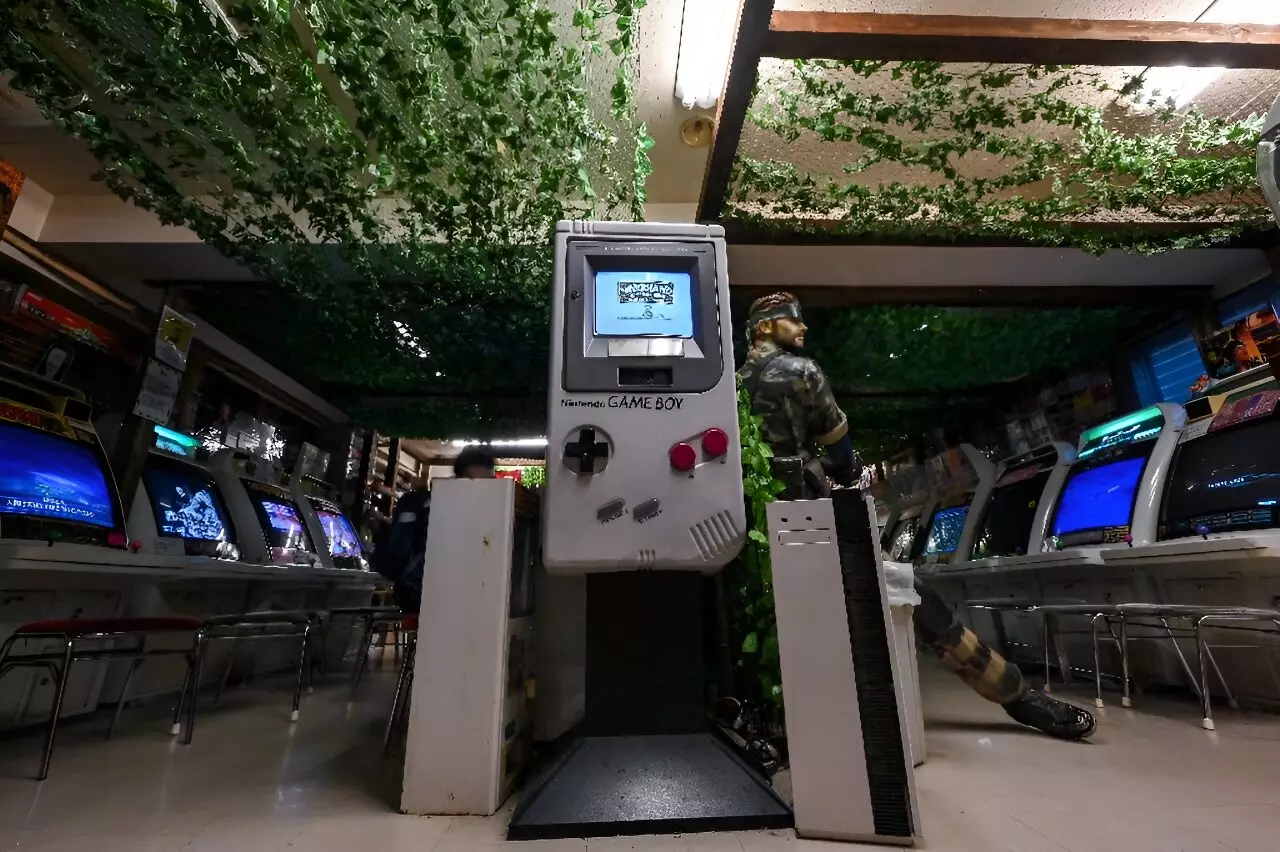The recent surge in popularity for retro gaming has captivated a diverse audience, not only in Japan but across the globe. With countless nostalgic memories attached to older consoles and games, many enthusiasts and collectors are willing to invest significant amounts of money to own pieces of their childhood. The phenomenon reached a new peak as David Madrigal, a U.S. tourist, reveled in the magic of finding a vintage PlayStation Vita in Tokyo’s Super Potato store, paying $200 for a treasure that might have cost him around $600 back home. It is experiences like these that shine a light on the ever-growing demand for retro gaming memorabilia, elevating the status of once-overlooked home consoles and handheld devices into coveted collectibles.
Super Potato, located in the bustling Akihabara district, serves as a veritable paradise for both gaming enthusiasts and curious tourists alike. The store’s multi-tiered layout is packed with everything from classic Game Boy cartridges and Sega Dreamcast consoles, to antique arcade machines where patrons can relive iconic moments from games like “Street Fighter II.” For many, stepping into this environment feels much like a child stepping into a candy store, filled with vibrant colors, flashing lights, and the intoxicating soundscape of gaming nostalgia. The appeal is not lost on Madrigal, who expressed his love for older systems that he feels offered a brand of innovation and creativity that is often missing in today’s gaming landscape.
With approximately 70–80 percent of Super Potato’s clientele comprising foreign tourists, the phenomenon of retro gaming has transcended national boundaries. According to store manager Komura, this influx can be attributed to Japan’s reputation as a treasure trove of unique gaming history, inspiring collectors from around the world to seek out iconic technology. This appeal is bolstered by the distinctiveness of older consoles, especially those that came packaged with vivid, attention-grabbing designs that differ markedly from their Western counterparts.
As video game historian Hiroyuki Maeda explains, part of the allure lies in the unique marketing strategies that were employed in Japan. Many consoles, like the Famicom or Super Famicom, were released internationally under different names with often radically different aesthetics. For passionate collectors, discovering an unfamiliar console creates an irresistible urge to own a piece of gaming history, further solidifying the emotional connection to their youthful experiences.
For some collectors, like the “super collector” known as Proudro, the realm of retro gaming extends beyond mere acquisition; it is about constructing a personal archive of memories. Nestled in a building neighboring his family home, Proudro’s collection is a breathtaking assortment of thousands of vintage games, consoles, and arcade machines—all functioning and impeccably maintained. Interestingly, he admits his passion lies not in actively playing these games, but rather in fostering the ambience of nostalgia that they bring. The sounds, sights, and history encapsulated within these consoles transport him back to simpler times when gaming was more about exploration and creativity.
Reflecting on the rise in value of such items, Proudro recalls a time when old games were often discarded, relegated to clearance bins and sold for mere pennies. Today, however, the landscape is markedly different; a mint-condition copy of “Super Mario Bros.” famously fetched $2 million at auction, signaling an era where collector’s items appreciate phenomenally due to their rarity and historical significance.
Throughout the years, the shift in perception regarding retro gaming has not only attracted collectors but has also transformed how we view cultural artifacts. Proudro’s nostalgic pursuits included traveling throughout Japan in search of hidden gems—inevitably trading vegetables for dusty old games at local shops—something that is now nearly impossible due to the changes in retail landscapes and the rise of online marketplaces. As antique shops disappear and remnants of the past become more scarce, the allure amplifies.
Despite the excitement surrounding this boom, Proudro’s sentiments hint at a more delicate balance between cultural preservation and globalization. He argues that while sharing Japanese retro products is a way to spread enthusiasm, there is an inherent value in retaining these treasures within Japan. His reflection resonates with many who cherish not only the games themselves but the cultural heritage they represent.
The retro gaming movement symbolizes a unique intersection of nostalgia, culture, and commerce that continues to evolve. The passion to collect, share, and relive experiences fosters a vibrant community that transcends borders, reminding us all of the joys of childhood—one pixel at a time.


Leave a Reply